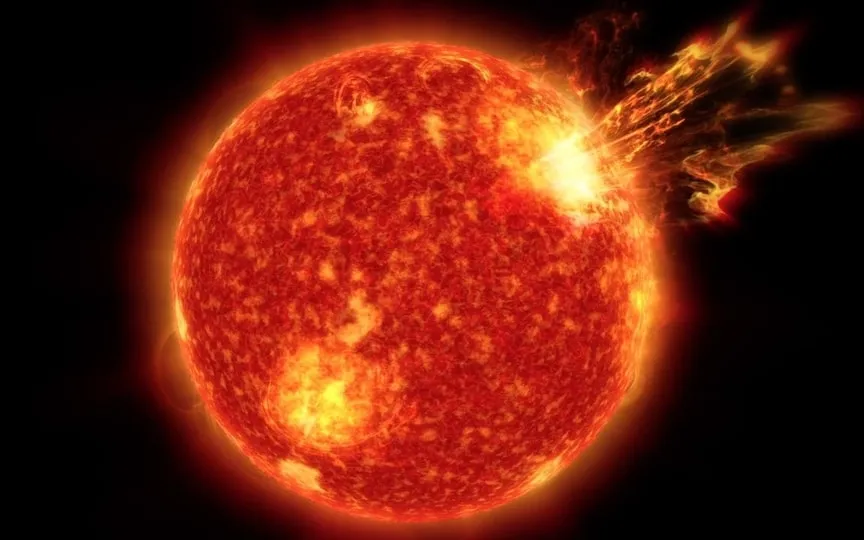Earth Bracing for Impact of Powerful Solar Storm
The effects of the solar activity that occurred in July will become apparent in August, as the coronal mass ejection (CME) cloud resulting from a magnetic filament eruption on July 28 is projected to reach Earth today, August 1. This significant solar event caused radio blackouts in certain areas on our planet. The CME cloud, consisting of both highly charged particles and a rapid velocity, has the potential to trigger a potent solar storm today. Further information can be found in the provided details.
According to a SpaceWeather.com report, “Geomagnetic storms are possible on August 1 when a CME is expected to hit the Earth’s magnetic field. Small G1 storms may escalate to G2. The CME was hurled almost directly toward Earth by a magnetic filament eruption in the solar northern hemisphere on July 28.
A strong solar storm is expected today
A Category G2 storm is strong enough to disrupt wireless communications such as GPS and shortwave radios, which are used primarily by sailors, drone pilots, ham radio operators and emergency operators.
Such storms can also damage sensitive instruments on smaller satellites in lower Earth orbits. Also, by creating a “pull” they can also bring down these satellites. Last year we saw this happen with the SpaceX Starlink satellites. In addition, there are some risks to electronic devices on the ground, although they are unlikely to be affected by a G2 solar storm.
While we wait for the CME cloud, it is also important to know that there are up to 9 sunspot groups on the side of the Sun facing Earth. These nine unstable regions could cause a terrifying solar storm in the coming days.
The technology that makes NASA SOHO possible
NASA’s SOHO (Solar and Heliospheric Observatory) is a satellite that was launched on December 2, 1995. It is a joint project between NASA and the European Space Agency (ESA) that studies the Sun, its atmosphere and its effects on the Solar System. . Equipped with 12 scientific instruments, including the Extreme Ultraviolet Imaging Telescope (EIT), Michelson Doppler Imager (MDI), LASCO (Large Angle and Spectrometric Coronagraph) and others, SOHO will take pictures of the solar corona, measure the solar velocity and magnetic fields on the solar surface, and observe a faint corona around the sun.




